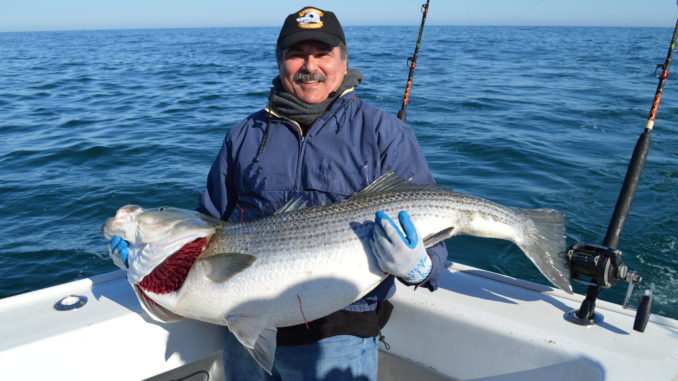
CRFL money funds study of declining population of rockfish
I recently had the opportunity to go on a couple of the 10 fishing trips that are part of a program funded by sales of North Carolina’s Coastal Recreational Fishing License to catch and tag coastal striped bass. On the two trips I took part in, more than 400 fish were caught and tagged, and slightly more than 1,000 fish were caught and tagged during the 10 trips. Most, unfortunately, had not migrated into North Carolina waters, so trips had to be run out of Virginia’s Rudee Inlet.
All of the fish were caught beyond the 3-mile boundary that separates state from federal waters, and while this venture is being performed by members of the N.C. Division of Marine Fisheries, permits had to be obtained to take fish in federal waters, and background checks were required to make sure each captain had never had a fishing violation.
The fish ranged in sizes from 20 to nearly 70 pounds. All were measured and tagged, while random fish had scales pulled for aging, and larger fish had scales pulled and were also weighed.
Eight striper tagging programs are in place from North Carolina to Massachusetts. Biologists hope to be able to determine migration and spawning patterns, while also hoping to learn which areas are being used the most for spawning.
Atlantic striped bass numbers have fallen off dramatically in the south the past several years. Poor water quality in spawning grounds and over fishing are factors often targeted as playing large parts in the downfall.
“Everyone is trying to compare the absolute best years of striper fishing against the worst,” said biologist Charlton Godwin of NCDMF, who led the project. “The best years of fishing were due mostly to phenomenal years of spawning. People are quick to put the blame on different reasons, but it is a combination of things that has led to the fish’s decline.”
During my trips, I saw marks on the fish finder I hadn’t seen in many years – very large schools of fish. Most of the coastal fish, especially the large ones, are females. By the time they reach 24 inches, almost all have spawned at least once and are moving out of the backwaters and rivers and into the ocean to live.
We used semi-heavy trolling gear, with double-rigged setups that allowed for multiple fish to be fought and put in the boat in less time, because this operation thrives on tagging as many fish as possible, so more numbers means more opportunity for feedback.
I have read studies about striper catch-and-release mortality, and Charlton confirmed them. The lighter the tackle and the longer the fight, the higher the mortality; in many cases, it takes days for the fish to die. The warmer the water, the higher the mortality rate. Releases in colder water relate to a better survival rate. This doesn’t mean that even 50 percent of the fish released after being caught on light tackle are dying, but there are definitely some that just aren’t making it.


Be the first to comment